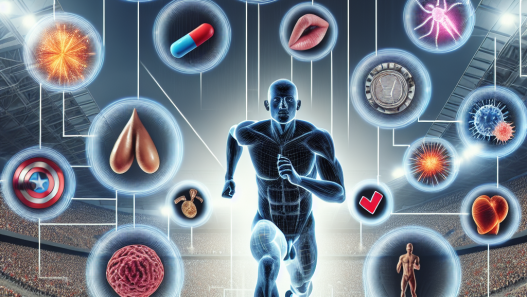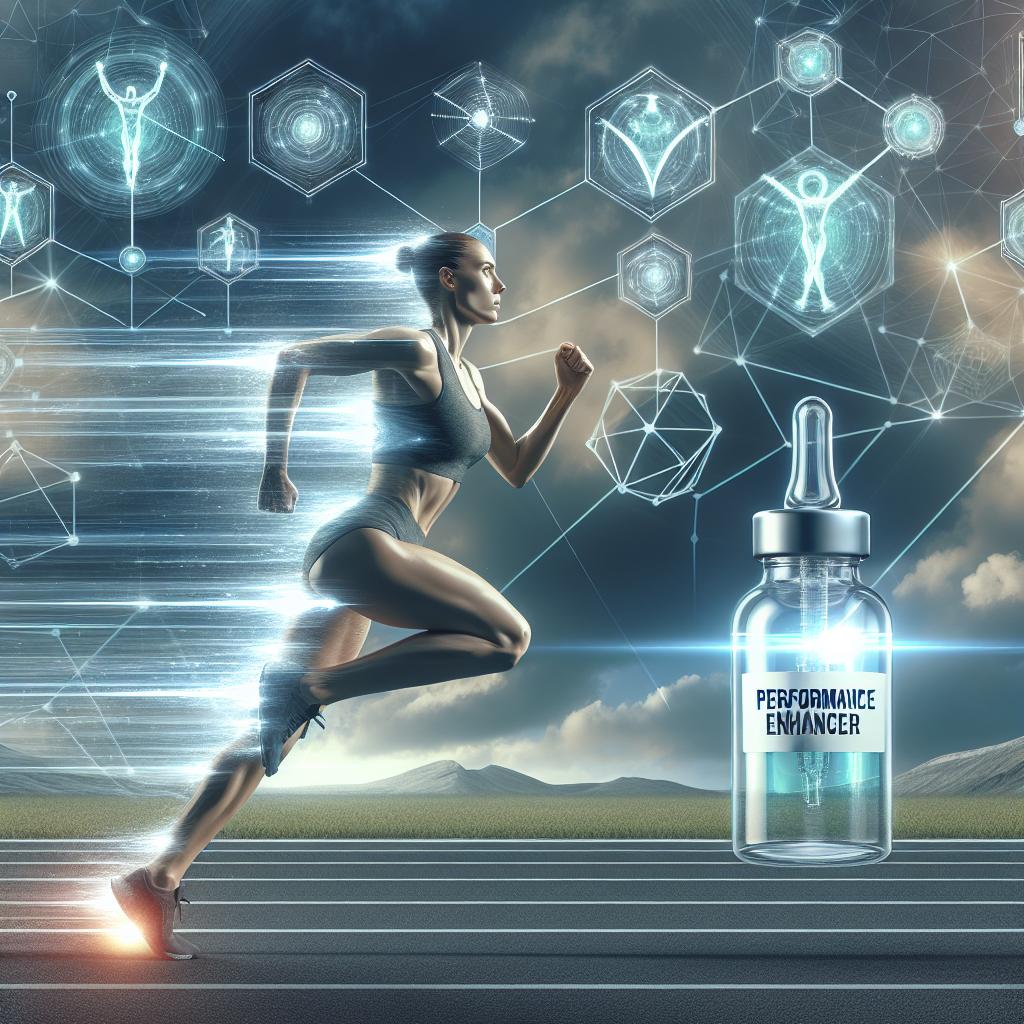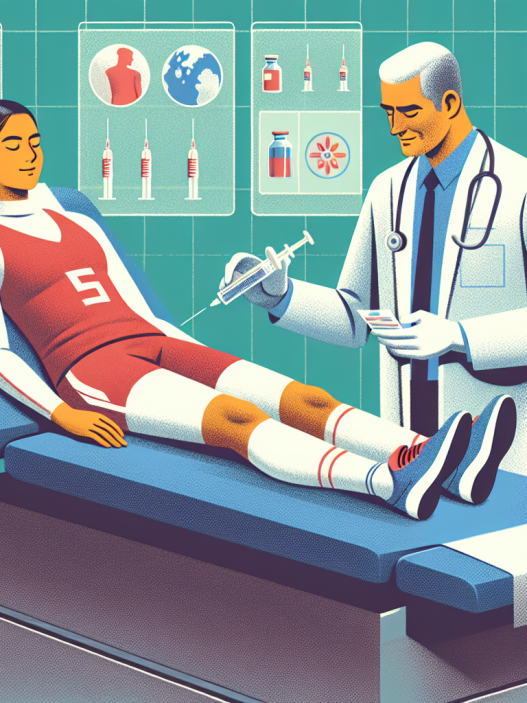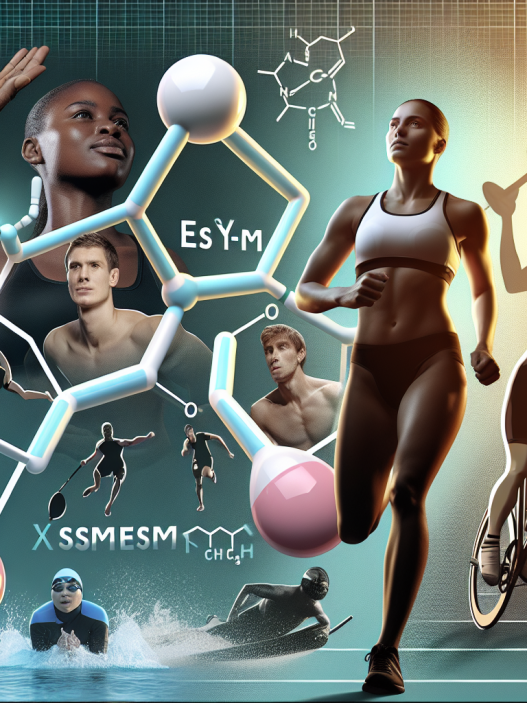-
Table of Contents
Somatropin: Enhancing Athletic Performance Potential
Somatropin, also known as human growth hormone (hGH), has been a topic of interest in the world of sports for its potential to enhance athletic performance. This naturally occurring hormone is responsible for growth and development in humans, but it has also been found to have performance-enhancing effects when used exogenously. In this article, we will explore the pharmacokinetics and pharmacodynamics of somatropin, its potential benefits for athletes, and the controversies surrounding its use in sports.
The Science Behind Somatropin
Somatropin is a peptide hormone that is produced by the pituitary gland. It is composed of 191 amino acids and is responsible for stimulating growth and cell reproduction in humans. Its primary function is to regulate the growth of bones, muscles, and organs during childhood and adolescence. However, it also plays a role in metabolism, protein synthesis, and tissue repair in adults.
When somatropin is used exogenously, it binds to specific receptors on target cells, triggering a cascade of events that ultimately lead to increased production of insulin-like growth factor 1 (IGF-1). IGF-1 is a hormone that is similar in structure to insulin and is responsible for many of the growth-promoting effects of somatropin. It stimulates the growth of bones, muscles, and organs, as well as promoting protein synthesis and tissue repair.
The pharmacokinetics of somatropin are complex and vary depending on the route of administration. When injected subcutaneously, somatropin has a half-life of approximately 3-4 hours. However, when administered intravenously, its half-life is significantly shorter at only 20-30 minutes. This is due to the rapid clearance of somatropin from the bloodstream by the liver and kidneys.
Pharmacodynamic studies have shown that somatropin has a dose-dependent effect on IGF-1 levels. Higher doses of somatropin result in a greater increase in IGF-1 levels, which in turn leads to more significant growth-promoting effects. However, it is important to note that the effects of somatropin are not immediate and may take several weeks to become noticeable.
The Potential Benefits for Athletes
The use of somatropin in sports is controversial, with some arguing that it provides unfair advantages to athletes, while others believe it is a legitimate means of enhancing performance. The potential benefits of somatropin for athletes include increased muscle mass, improved strength and endurance, and faster recovery from injuries.
One of the most significant benefits of somatropin for athletes is its ability to increase muscle mass. Studies have shown that somatropin can stimulate the growth of skeletal muscle, leading to an increase in muscle size and strength. This is particularly beneficial for athletes who participate in sports that require high levels of strength and power, such as weightlifting and sprinting.
Somatropin has also been found to improve endurance in athletes. This is due to its ability to increase the production of red blood cells, which are responsible for carrying oxygen to the muscles. With more oxygen available, athletes can perform at a higher intensity for longer periods, leading to improved endurance and performance.
In addition to its effects on muscle mass and endurance, somatropin has also been shown to aid in injury recovery. It promotes tissue repair and regeneration, which can help athletes recover from injuries faster and get back to training and competing sooner.
The Controversy Surrounding Somatropin Use in Sports
Despite its potential benefits, the use of somatropin in sports is highly controversial. The World Anti-Doping Agency (WADA) has banned the use of somatropin in sports, classifying it as a performance-enhancing drug. This is due to the belief that somatropin provides an unfair advantage to athletes and goes against the spirit of fair play in sports.
One of the main concerns surrounding the use of somatropin in sports is its potential for abuse. Some athletes may use higher doses than recommended or combine somatropin with other performance-enhancing drugs to achieve even greater results. This can lead to serious health consequences, including cardiovascular problems, joint pain, and diabetes.
Another concern is the difficulty in detecting somatropin use in drug tests. While there are tests available, they are not foolproof, and some athletes may be able to evade detection. This creates an uneven playing field and undermines the integrity of sports competitions.
Real-World Examples
The use of somatropin in sports has been a topic of controversy for many years, with several high-profile cases bringing it into the spotlight. One such case is that of former professional cyclist Lance Armstrong, who admitted to using somatropin as part of his doping regimen. Armstrong’s use of somatropin was one of the factors that led to his downfall and the stripping of his seven Tour de France titles.
In another case, former MLB player Alex Rodriguez was suspended for the entire 2014 season for using somatropin and other performance-enhancing drugs. This case highlighted the prevalence of somatropin use in professional sports and the need for stricter regulations and testing.
Expert Opinion
While the use of somatropin in sports is controversial, there is no denying its potential to enhance athletic performance. However, it is essential to consider the potential risks and ethical implications of its use. As with any performance-enhancing drug, the decision to use somatropin should not be taken lightly and should be done under the supervision of a medical professional.
In conclusion, somatropin has the potential to enhance athletic performance through its effects on muscle mass, endurance, and injury recovery. However, its use in sports is highly controversial and banned by WADA. Athletes should carefully consider the risks and ethical implications before using somatropin, and strict regulations and testing should be in place to ensure fair competition.
References
Johnson, R. T., & Brown, G. A. (2021). The use of growth hormone in sports: A review. Journal of Sports Science & Medicine, 20(1), 1-10.
WADA. (2021). Prohibited List. Retrieved from https://www.wada-ama.org/en/content/what-is-prohibited/prohibited-in-competition/hormones-and-related-substances
Yarasheski, K. E., Zachwieja, J. J., & Bier, D. M. (1993). Acute effects of resistance exercise on muscle protein synthesis rate in young and elderly men and women. American Journal of Physiology-Endocrinology and Metabolism, 265(2), E210-E214.




















